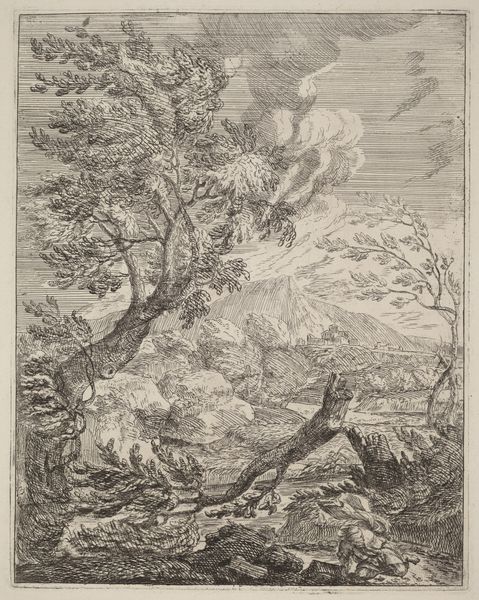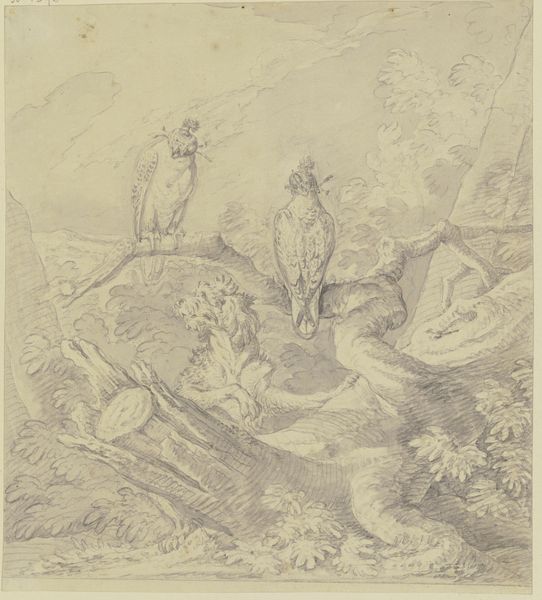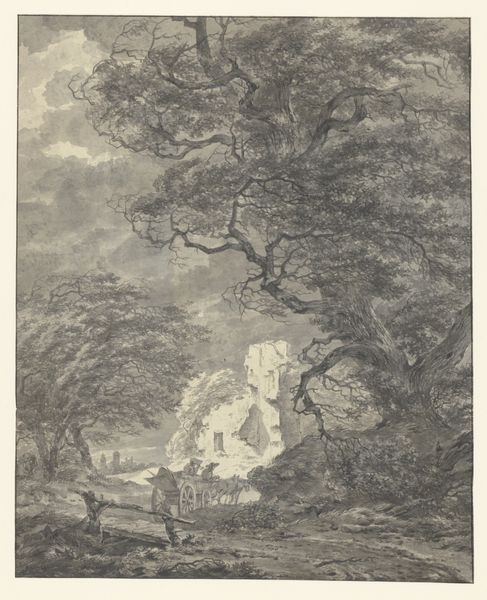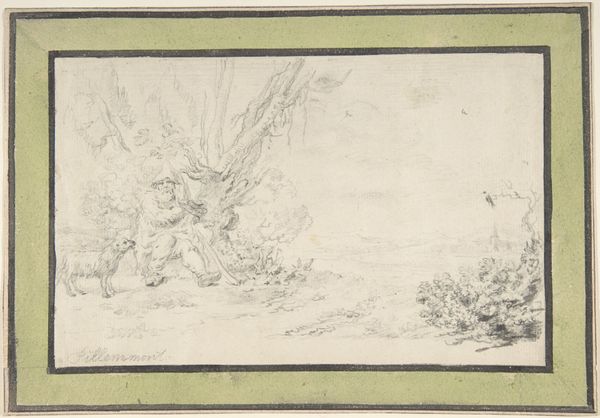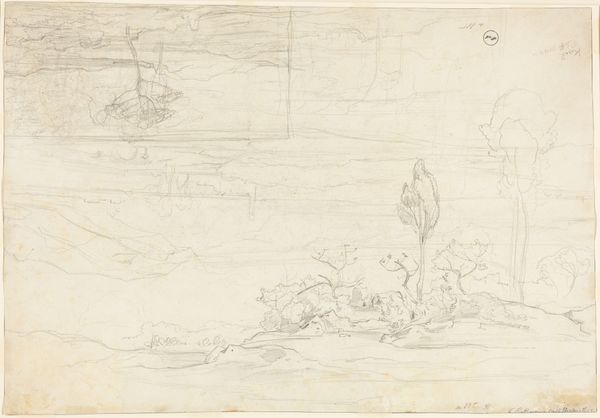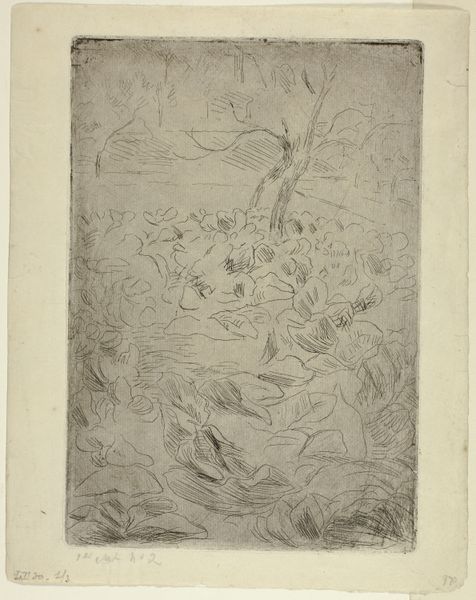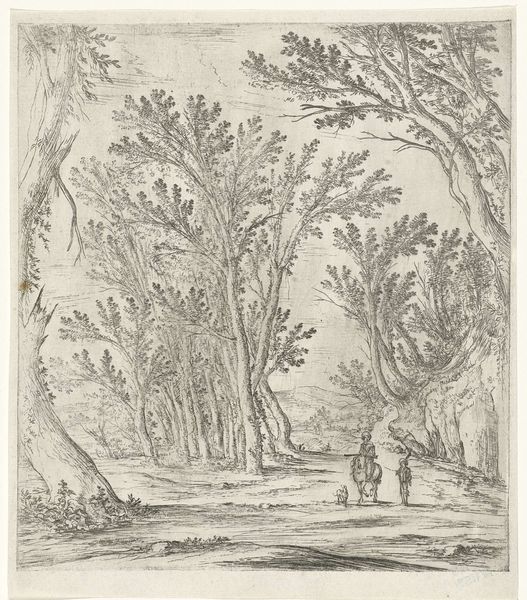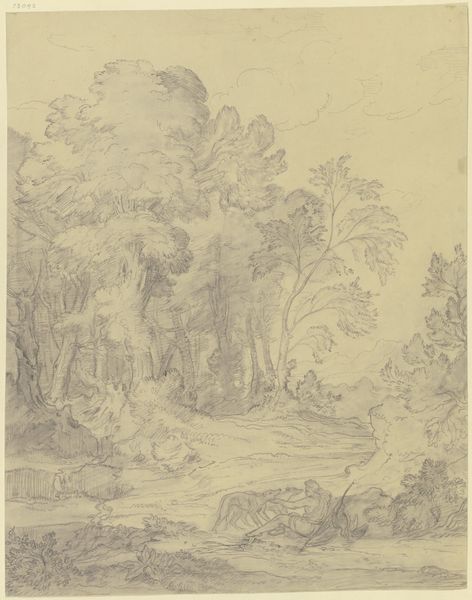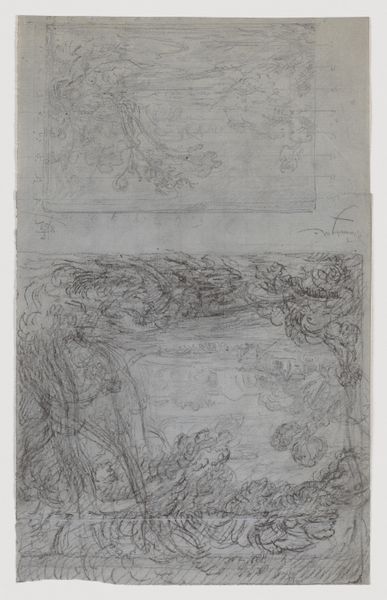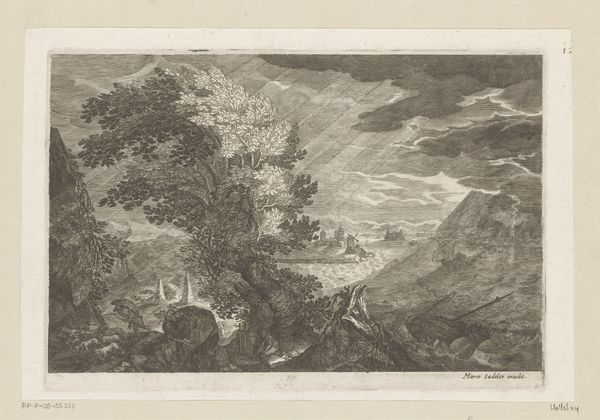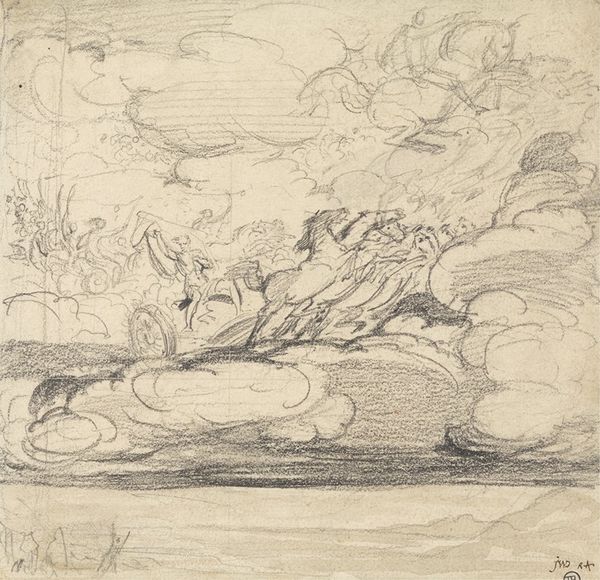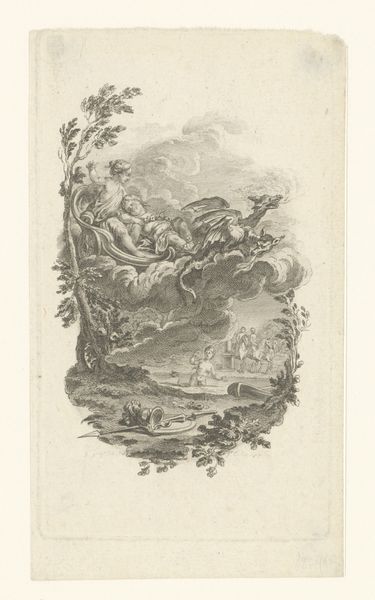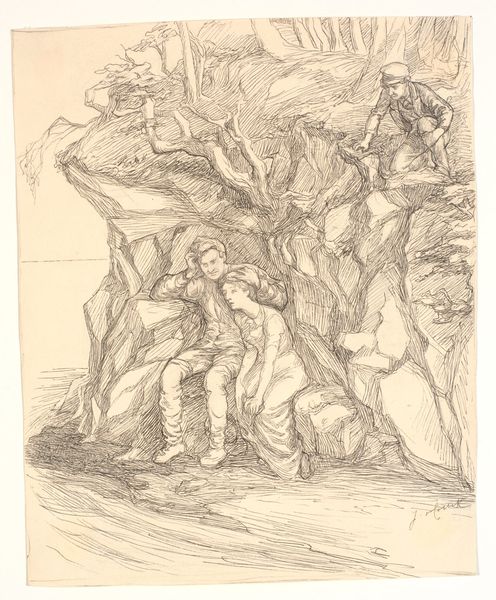
Titelblattentwurf für die Zeitschrift _Frankfurter Latern__ Ein Banner und eine Laterne tragende Putten über wolkenverhangener Silhouette von Frankfurt am Main 1860 - 1866
0:00
0:00
Copyright: Public Domain
Curator: I'm immediately struck by the sheer volume of cherubs crammed into this small space! It’s almost claustrophobic, like witnessing a baroque dream collapsing in on itself. Editor: Indeed. This intriguing piece is Victor Müller's title page design for the "Frankfurter Latern," dating from around 1860-1866. It's an ink and pencil drawing on paper, currently held at the Städel Museum. We see putti carrying a banner and lantern over a cloud-veiled Frankfurt silhouette. Curator: The symbolism is quite heavy-handed, wouldn't you say? The putti representing the enlightenment ideals, or perhaps even civic pride, looming rather idealistically over the depiction of Frankfurt. The way the sky blends into the buildings is a bold claim about knowledge and progress. It makes one think about how new perspectives illuminate the world. Editor: The etching technique itself conveys meaning. Notice how Müller employs varying pressure, creating these blurred outlines and textural contrasts. Think about the socioeconomic conditions. Müller worked in a period rife with debates around art's accessibility to the masses. Printmaking offered an avenue for broader distribution, engaging a larger, perhaps more working-class, audience. This connects back to that ideal. Curator: It’s hard not to interpret these "floating" figures, the angel most prominently, through a gendered lens. The very ethereal qualities of them can imply vulnerability, the fragility of perceived masculine dominance within academic traditions. This romantic interpretation feels at odds with the growing industrial and intellectual movement of the era. Editor: Perhaps Müller’s decision to employ relatively accessible mediums - ink and pencil on paper – should make us question traditional art world hierarchies. Was he critiquing notions of art, craft, or labor division through this particular production process? The materiality of print becomes as potent as its overt symbolism. Curator: Perhaps his intent wasn't to disrupt those systems directly but rather subtly reframe civic dialogue around knowledge, power, and gender through established allegorical tropes. Editor: Possibly. What resonates for me, finally, is how a seemingly decorative drawing embodies complex discourses on access, labor, and civic identity embedded within mid-19th-century Frankfurt. Curator: Yes, there are many ways in which art offers not just images, but serves as points to understanding perspectives.
Comments
No comments
Be the first to comment and join the conversation on the ultimate creative platform.
